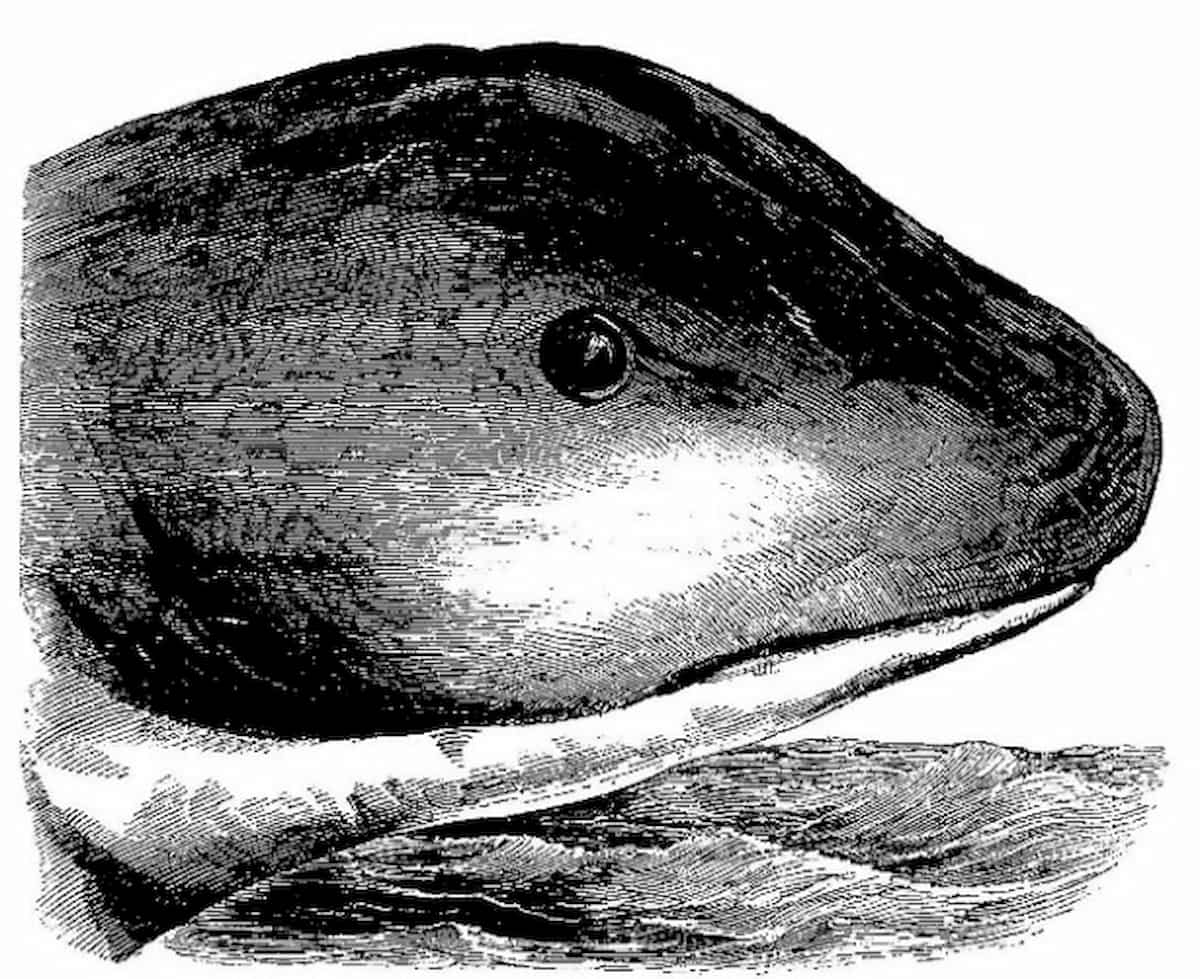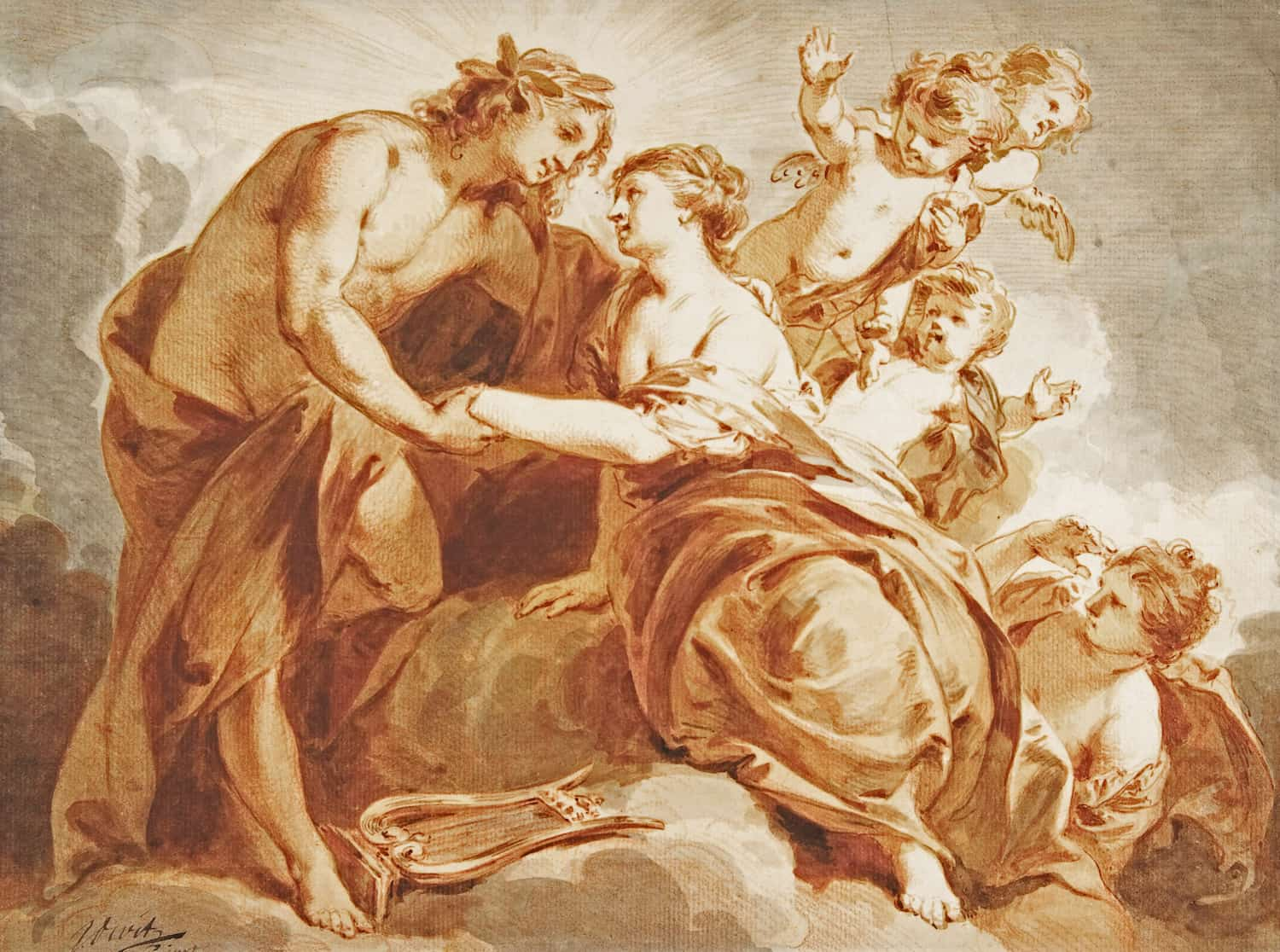In Greco-Roman mythology, Morpheus (in Greek Μορφεύς, from μορφή morphê, ‘form’) is a god associated with sleep and the dream world. He only appears in Ovid’s Metamorphoses, a Roman poet, but uses his name in Greek. He is imagined as a natural son of Sleep (Somnus). It was from the Middle Ages onwards when the name Morpheus began to be more generally established to designate the titular god of sleep or dreams, displacing in the process other dream gods; these were barely abstract personifications.
In Ovid’s Account
Morpheus plays an important role in the story of Ceix and Alcyone. Ceix was married to Alcyone. In Ovid’s version, Ceix went to Claros (Ionia) to consult an oracle but shipwrecked during the voyage, drowning. Juno (Hera) tasked her messenger, the goddess Iris, to go to Morpheus to tell Alcyone the news through a dream. Knowing of her husband’s death by Morpheus, Alcyone threw herself into the sea. Pitying them, the gods transformed the couple into kingfishers or halcyons.
Morpheus was one of the “people of a thousand sons” of Sleep and his name derives from the word “form” (μορφή), as it is the function he possesses. During dreams, he can take on any human form and communicate with a sleeper: “Artisan and imitator of figures, Morpheus, none other more skillfully reproduces the gait and bearing and the sound of speaking. He also adds the clothing and the most common words for each.
But he can only imitate men.” Like other gods related to dreams, Morpheus is depicted with wings.
Among all the Dreamscapes (Somnia), the thousand sons of Sleep, Morpheus stands out above them. And after him, there were two other brothers.
Icelus, whom the common people call Phobetor, takes on the appearance of animals: “he becomes a beast; he becomes a bird; he becomes, of a long body, a serpent.” And also Phantasos, who takes on inanimate forms: “he to the earth, to a rock, to a wave, to a log, and to whatever is empty of soul, deceitfully he passes.” Some contemporaries say that these Ovidian figures are poetic creations and not mythical concepts. Hesiod speaks to us about the tribe of the Dreamscapes or Oneiroi, in an abstract manner.

In the Iliad, Homer uses two abstract personifications: Oneiros, the Dream (Oneiros), and Hypnos, the Sleep (Hypnos). Oneiros seems to have the same function as Morpheus, since Zeus commands him thus: “Go, go, pernicious Dream, make your way to the swift ships of the Achaeans, enter into the tent of Agamemnon, son of Atreus, and tell him exactly what I am charging you.”
The Lord of Sleep was the father of a thousand sons, an entire tribe, but of all of them he singled out Morpheus, who could take the form of any human being at will. No Son could compete with him in artistry, to imitate the appearance of men: his voice, his gait, his face were exactly like the original; In addition, he accurately mimicked their robes and often went out into the world.
— “Metamorphoses”
In this case, Oneiros takes on the form of the wise old man Nestor to speak to him in dreams. Hypnos, on the other hand, is described as the twin brother of Thanatos and is commanded by Hera: “Please, lull under his brows the shining eyes of Zeus as soon as I lie down beside him, united to him in love.” Again, the Homeric Hypnos agrees with the Ovidian Somnus: Iris must quickly leave the presence of Sleep “since she could no longer tolerate the force of slumber.
“
He was depicted with wings that beat quickly and silently, allowing him to go to any corner of the Earth. Morpheus was responsible for inducing the dreams of those who slept and for taking on a human appearance to appear in them, especially that of loved ones (hence his name), allowing mortals to escape for a moment from the machinations of the gods. From his name comes the expression “to be in the arms of Morpheus,” which means ‘to dream’ and by extension ‘to sleep’ or vice versa. It is told in The Metamorphoses that Morpheus sleeps in an ebony bed in a subtly lit cave, surrounded by poppy flowers (which contain alkaloids with sedative and narcotic effects).
Greek physicians paid homage to Morpheus especially in the sanctuaries of the great oracles and in the temples of Asclepius, the god of medicine, where he was invoked through complex rituals involving baths, fasting, the burning of incense, music, and chants that induced sleep.
He appears in Ovid’s Metamorphoses as one of the thousand children of Hypnos.
Out of as many dreams as the cave around him,
God chose Morpheus; he was above all adept at all, In gait, in the feigned face,
in the assumption of the figure No Morpheus can equal the
brethren.
He knows how to choose both clothes and words.
It’s only in people that it changes.
[…] and only appoints
Morpheus to Juno of the interpreter’s orders.
He beckoned to the headboard when he folded his face lazily,
A shiver falls into the softness before he falls asleep delightfully.
Morpheus obeys the order, and with his wings light,
In spite of the shadows he runs to the land of Hemon, He takes the form of Ceix, without robe, changed,Pale stands by the bedside of poor Alcyona;
From his beard and hair, water flowed in a large stream.
Standing over the bed, the weeping bier said: […]
He spoke in Ceiks’s voice; sighs, tears, groans,
He even pretended Morpheus to move his hand.
He sighs, stretches out Alcyon’s hands in his sleep, Instead of a body,
he only presses the shadow to his womb.
[…] She was frightened by her own cry and her husband’s image, She woke up, got up, and looked in that direction,Where her favorite ghost had appeared.
Morpheus in Different Mythologies
In many cultures, there are different figures similar to Morpheus; sometimes, Hipnos and Morpheus are considered the same. In Anglo-Saxon culture, Sandman is considered a representative figure of sleep. In Egyptian mythology, there was the god Thoth and the god Tutu who represented dreams. In Japanese culture, there were beings called Baku who ate nightmares and evil spirits. In Hinduism, the god Vishru appears, who among other things represents dreams.
Trivia
- In the movie The Matrix, the main character Morpheus (played by Laurence Fishburne) refers to the Matrix as a “dream”, as opposed to reality.
- The name of the narcotic substance morphine comes from the name of Morpheus, by analogy with its action. The name of the god of dreams is also associated with the expression “in the arms of Morpheus”.
- From the word morphine, derived from the term morphium, so named by Friedrich Sertürner because of the soporific power of this alkaloid.
Myth
Hera asks Morpheus’ father Hypnos to deliver the news of Ceyx’s death on the high seas to his wife Alcyone. However, the sleep god passes this order on to Morpheus, who can take possession of the form of Ceyx in the dream. Morpheus assumes the form and delivers the news to Alcyone.
Sculptures
- Morpheus by Jean-Antoine Houdon at the Louvre Museum.
- Morpheus by Nicolas Poussin in the garden of the Palace of Versailles.
- God of Sleep by an anonymous author at the Prado Museum.
- Morpheus or Sleeping Love by José Álvarez Cubero.
Paintings
- In the Arms of Morpheus by William Reynolds Stephen.
Sources
- Ovid, The Metamorphoses XI,583.
- Homer: Iliad II, 8.
- Iliad XIV, 235






